Home>Articles>What Is The Difference Between A Coverlet And A Quilt?
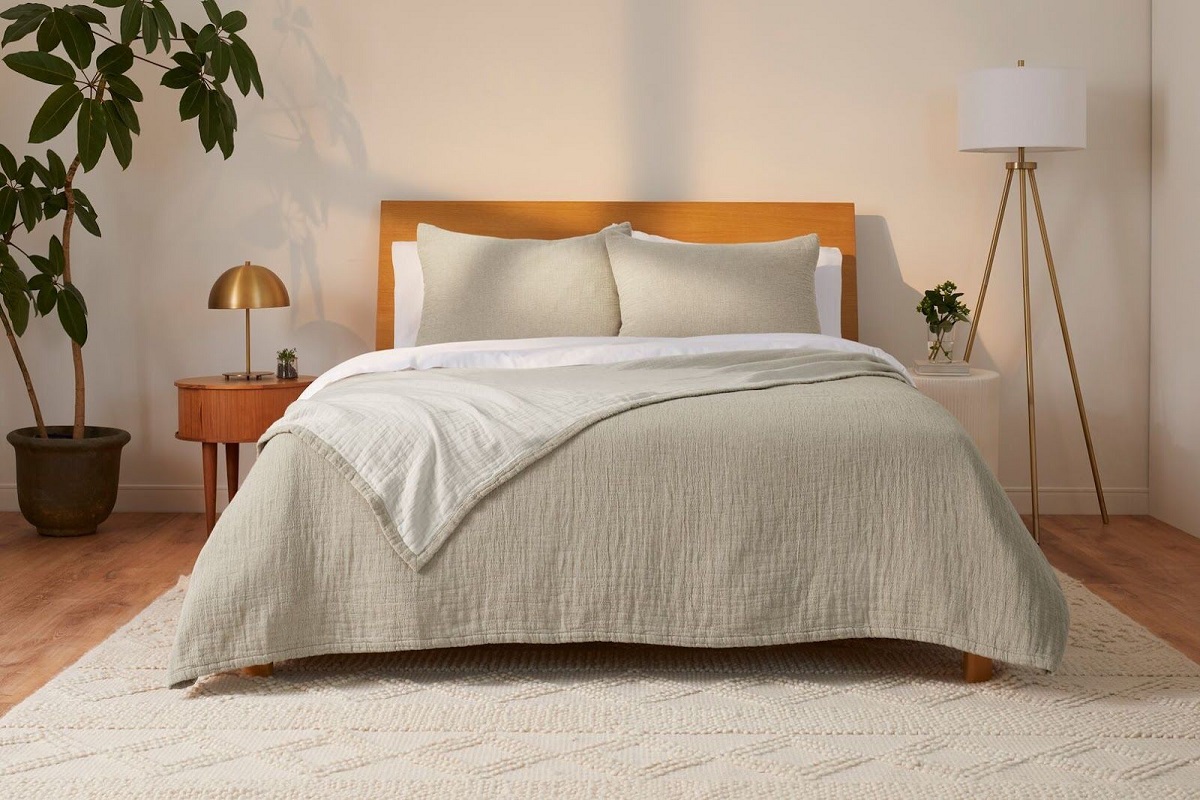

Articles
What Is The Difference Between A Coverlet And A Quilt?
Modified: January 18, 2024
Discover the distinction between a coverlet and a quilt in our informative articles. Unveil the key differences and choose the perfect bedding option for your home.
(Many of the links in this article redirect to a specific reviewed product. Your purchase of these products through affiliate links helps to generate commission for Storables.com, at no extra cost. Learn more)
Introduction
When it comes to bedding, there are numerous options to choose from. Among the many choices, coverlets and quilts are two popular bedding options that provide warmth and style to any bedroom. While both coverlets and quilts serve the same purpose of keeping you cozy during the night, they differ in their construction, design, functionality, and materials used. Understanding the difference between a coverlet and a quilt can help you make an informed decision when selecting the perfect bedding for your bedroom.
In this article, we will delve into the nuances of coverlets and quilts, exploring their definitions, construction, design, functionality, and materials used. By the end, you’ll have a thorough understanding of the differences between these two bedding options.
Whether you’re an interior design enthusiast looking to upgrade your bedroom or a curious shopper wanting to know more about bedding options, this article will provide you with the knowledge you need. Let’s dive in!
Key Takeaways:
- Coverlets offer lightweight comfort and minimalist design, perfect for creating a sleek and tailored look in the bedroom. Their versatility in layering and styling makes them a great choice for those seeking a simple yet elegant aesthetic.
- Quilts are functional works of art, known for their intricate designs and superior insulation. They provide exceptional warmth and comfort, making them ideal for colder climates or individuals who prefer a cozy sleep experience.
Definition of a Coverlet
A coverlet is a lightweight, decorative bedspread that typically covers the entire bed surface, including the pillows and box spring. It is designed to add an extra layer of style and texture to the bedding ensemble. Coverlets are available in a variety of sizes, from twin to king, and can be used alone or layered with other bedding accessories to create a cohesive look.
One of the distinguishing features of a coverlet is its size. It is typically smaller in size compared to a quilt or comforter, allowing it to fully cover the top of the bed without reaching the floor on the sides. Coverlets are characterized by their simplicity and minimalistic design, often featuring a solid color or a subtle pattern. They are commonly made from lightweight fabrics such as cotton, linen, or silk, making them suitable for warmer climates or as a decorative element during the warmer months.
Coverlets are designed to be versatile, allowing you to easily change the look of your bedroom. They can be used as the topmost layer of bedding, providing a clean and polished appearance. Alternatively, coverlets can be layered with blankets, duvets, or quilts to add warmth during colder seasons.
When it comes to styling a coverlet, there are various options to consider. You can neatly fold it at the end of the bed for a tailored and sophisticated look or drape it casually for a relaxed and inviting vibe. Additionally, coverlets can be paired with coordinating shams, decorative pillows, or a bed skirt to complete the overall aesthetic of the bed.
Overall, coverlets are a versatile and stylish bedding option. They add a touch of elegance to any bedroom decor while providing lightweight comfort. Whether you prefer a minimalist or a more elaborate look, a coverlet is a great choice to enhance the aesthetic appeal of your bed.
Definition of a Quilt
A quilt is a type of bed covering that consists of three layers: a decorative top layer, a layer of batting or filling in the middle, and a bottom layer. These layers are stitched together to create a quilted pattern, often with intricate designs and motifs. Quilts are known for their warmth, durability, and creativity.
The decorative top layer of a quilt is often made from various fabric pieces sewn together in a patchwork style or a single piece of fabric with appliqué or embroidery designs. This layer can feature vibrant colors, intricate patterns, and storytelling elements that reflect the quilter’s creativity and artistry.
The layer of batting or filling in the middle of a quilt provides warmth and insulation. It is typically made from materials like cotton, wool, or polyester. The thickness and density of the batting determine the level of warmth the quilt provides. Quilts can range from lightweight and breathable to thick and cozy, making them suitable for various climates and personal preferences.
The bottom layer of a quilt, known as the quilt backing, is usually a solid piece of fabric that provides stability and structure to the quilt. It is often made from cotton or a blend of cotton and polyester. The layers of the quilt are held together through a process called quilting, where stitches are made in a decorative pattern through all layers, ensuring they stay securely in place.
Quilts have a long history, dating back centuries, and are deeply rooted in craftsmanship and tradition. They are not only functional but also hold cultural, historical, and sentimental value. Quilts are often passed down through generations as family heirlooms, carrying the stories and memories of those who made and used them.
Aside from their practical use as bed coverings, quilts are also cherished for their artistic value. Quilters create unique and intricate designs using various techniques such as patchwork, appliqué, hand embroidery, or machine quilting. Each quilt is a work of art, showcasing the quilter’s skill, creativity, and personal style.
Quilts can be used as a focal point in bedroom decor, adding a touch of warmth, charm, and nostalgia. They can be displayed on beds, draped over couches or armchairs, or even hung on walls as decorative art pieces. With their beauty, craftsmanship, and sentimental value, quilts are treasured possessions that bring comfort and joy to any home.
Construction of a Coverlet
Coverlets are typically constructed with a focus on simplicity and lightness. They are designed to provide a sleek and tailored look while being easy to care for. Let’s explore the typical construction features of a coverlet:
- Fabric: Coverlets are commonly made from lightweight fabrics such as cotton, linen, or silk. These fabrics offer breathability and a smooth, luxurious feel. The choice of fabric can vary depending on the desired aesthetic and level of comfort.
- Size and Shape: Coverlets come in various sizes, ranging from twin to king, to fit different bed sizes. They are rectangular in shape and are designed to cover the top of the bed without reaching the floor on the sides.
- Quilting: Unlike quilts, coverlets are typically not quilted. They may have a thin layer of batting for added softness, but the quilting stitches are minimal or nonexistent. This contributes to the lightweight feel of coverlets.
- Hemming and Edges: Coverlets have neatly finished edges and hems. The edges are typically straight, providing a clean and polished look. Some coverlets may have decorative trims or piping along the edges to add a touch of elegance.
- Design Elements: Coverlets often feature a simple design, with solid colors or subtle patterns. They are designed to complement various bedroom aesthetics without overpowering the overall decor. The minimalist design also allows for versatility in layering and styling.
Coverlets are constructed with a focus on lightweight comfort and ease of use. Their simple design and construction make them an ideal choice for those seeking a clean and modern look for their bedroom. With their breathable fabrics and minimal quilting, coverlets offer a lightweight and effortless option for enhancing the aesthetics of the bed.
Construction of a Quilt
Quilts are renowned for their intricate construction and time-honored techniques. They are crafted with attention to detail and often involve a combination of handwork and machine stitching. Here are the key components of a quilt’s construction:
- Top Layer: The top layer of a quilt, also known as the quilt top, is where the artistic design comes to life. It is created by sewing together various fabric pieces in a patchwork style, or by using a single fabric with appliqué or embroidery designs. Quilters meticulously arrange and stitch these pieces together, creating beautiful and intricate patterns.
- Batting/Filling: The second layer of a quilt is the batting or filling, which provides warmth, insulation, and loftiness. Batting is typically made of materials like cotton, wool, or polyester. The thickness and density of the batting can vary, allowing for customization based on desired warmth and comfort.
- Backing Fabric: The backing fabric forms the bottom layer of a quilt. It is usually a single piece of fabric that complements the quilt’s aesthetic. The backing provides stability to the quilt while protecting the batting. Quilters often choose fabrics that coordinate with the quilt top or opt for neutral colors to allow the intricate quilting stitches to shine.
- Quilting Stitches: Quilts are held together using quilting stitches, which form a decorative pattern and secure the layers together. Quilting can be done by hand or by machine, depending on personal preference and the desired effect. Hand quilting allows for intricate detailing, while machine quilting offers efficiency and a consistent stitch. The quilting stitches not only serve a functional purpose but also add beauty and texture to the quilt.
- Binding: The final step in quilt construction is binding, which is applied to the edges of the quilt to provide a finished look and to prevent fraying. Binding is typically made from fabric that complements the quilt, and it is folded over the raw edges and sewn in place. It adds a decorative touch to the quilt while ensuring its durability.
Quilt construction requires skill, patience, and an eye for detail. Quilters invest countless hours into cutting and sewing fabric pieces, carefully selecting the batting, layering the quilt, and executing intricate quilting stitches. The result is a unique and cherished piece of functional art that provides warmth and beauty for generations.
Whether it’s a traditional patchwork quilt, an intricately appliquéd design, or a contemporary art quilt, the construction of a quilt reflects the craftsmanship and creativity of the quilter. Each stitch and fabric choice contributes to the overall beauty and resilience of the quilt, making it a cherished heirloom and a testament to the quilting tradition.
A coverlet is a lightweight, decorative bedspread that typically does not cover the pillows, while a quilt is a thicker, warmer bed covering that often has a decorative top and a layer of batting.
Differences in Design
While both coverlets and quilts serve the purpose of providing warmth and style to a bed, there are distinct differences in their designs. These differences contribute to the overall aesthetic appeal and versatility of each bedding option. Let’s explore the variations in design between coverlets and quilts:
Coverlets:
- Coverlets are known for their simplicity and minimalistic design.
- They often feature solid colors or subtle patterns, allowing them to blend seamlessly with various bedroom decor styles.
- Coverlets have neat and straight edges, providing a clean and tailored look.
- They can be used as standalone bedding or easily layered with other accessories.
- Coverlets offer versatility in styling, allowing you to fold them neatly at the end of the bed or drape them casually for a relaxed look.
Quilts:
- Quilts are recognized for their intricate and detailed designs.
- Quilt tops are often created with patchwork, appliqué, or embroidery techniques, resulting in visually stunning and storytelling designs.
- Quilts can feature vibrant colors, bold patterns, and intricate motifs that reflect the quilter’s artistic vision.
- They are often considered works of art and are displayed as decorative pieces in addition to their functional use as bedding.
- Quilts offer an opportunity for personalization and customization, allowing individuals to express their creativity and showcase their quilting skills.
While coverlets focus on clean lines and simplicity, quilts emphasize intricate detailing and creativity. The design differences between coverlets and quilts cater to different tastes and preferences, allowing individuals to choose a style that best suits their personal aesthetic and bedroom decor.
Both coverlets and quilts can add visual interest and elevate the overall design of a bed and bedroom. Whether you prefer the understated elegance of a coverlet or the vibrant artistry of a quilt, both options offer distinct design elements that can transform your sleeping space into a cozy and visually appealing haven.
Differences in Functionality
While coverlets and quilts both provide warmth and style to a bed, there are differences in their functionality that influence their practical use. Understanding the variations in functionality can help you choose the bedding option that best suits your specific needs. Let’s explore the differences in functionality between coverlets and quilts:
Coverlets:
- Coverlets are lightweight and often made from breathable fabrics, making them suitable for warmer climates or as a decorative layer during the summer months.
- They offer a sleek and tailored look, providing a polished appearance to the bed ensemble.
- Coverlets can be used alone as a top layer on the bed. They offer a minimalistic style and are easy to clean and maintain.
- They provide moderate warmth and are ideal for individuals who prefer a lighter bedding option or who live in regions with milder climates.
- Coverlets offer versatility in layering. They can be combined with blankets, duvets, or quilts to add extra warmth during colder seasons.
Quilts:
- Quilts are known for their superior insulation and warmth, making them an excellent choice for colder climates or individuals who prefer a cozy and snug sleep experience.
- They offer a wide range of thicknesses and densities in batting, allowing for customized warmth levels and comfort preferences.
- Quilts are multi-functional and can be used as both a decorative top layer and a source of warmth.
- They are thicker and heavier than coverlets, providing a comforting weight that can promote relaxation and better sleep.
- Quilts offer durability and can withstand regular use and washing, making them a practical choice for everyday bedding.
While coverlets excel in lightweight comfort and versatility in layering, quilts shine in their superior insulation, customizable warmth, and multi-functional design. The choice between a coverlet and a quilt depends on factors such as climate, personal sleep preferences, and the desired aesthetic for the bedroom.
Ultimately, both coverlets and quilts offer functional benefits and contribute to a comfortable and visually appealing sleep environment. Whether you prioritize lightweight versatility or optimal warmth and comfort, there is a bedding option suitable for your unique needs.
Materials Used in Coverlets
Coverlets are constructed using a variety of materials, each offering different qualities in terms of durability, comfort, and aesthetic appeal. The choice of material used in a coverlet can greatly impact its overall feel and performance. Let’s explore some common materials used in the construction of coverlets:
- Cotton: Cotton is a popular choice for coverlets due to its softness, breathability, and versatility. It is lightweight and comfortable, making it ideal for year-round use. Cotton coverlets can have a smooth and crisp feel or a more textured finish, depending on the weave. They are easy to care for and can withstand regular washing.
- Linen: Linen coverlets bring a touch of luxury and sophistication to the bed. Linen is known for its exceptional breathability and ability to wick away moisture, keeping you cool during hot nights. It has a textured and slightly rustic feel that adds visual interest to the overall bedding ensemble. Linen coverlets are highly durable and become softer and more comfortable with each wash.
- Silk: Silk coverlets exude elegance and luxury. They have a lustrous appearance and a silky smooth feel against the skin. Silk is a natural temperature regulator, keeping you warm in cold weather and cool in warmer climates. Silk coverlets are lightweight and can add a touch of sophistication to any bedroom decor.
- Microfiber: Microfiber is a synthetic material that mimics the softness and durability of natural fibers. It is often used in budget-friendly coverlets due to its affordability and easy care properties. Microfiber coverlets are lightweight, hypoallergenic, and resistant to wrinkles and fading. They provide a smooth and soft feel without the high price tag.
- Blend Fabrics: Many coverlets are made from fabric blends, combining two or more materials to optimize the benefits of each. For example, a cotton-polyester blend offers the softness of cotton with the wrinkle and fade resistance of polyester. Blend fabrics provide a balance of comfort, durability, and affordability.
The choice of material for a coverlet depends on personal preferences, desired comfort level, and budget. Each material offers its own set of advantages, allowing you to find the perfect coverlet to suit your needs and style.
Regardless of the material used, it is essential to check the bedding labels and manufacturer instructions for proper care and maintenance, ensuring the longevity and performance of your coverlet.
Materials Used in Quilts
Quilts are crafted using a diverse range of materials, each contributing to the overall beauty, warmth, and durability of the quilt. The choice of materials used in quilts can greatly influence their appearance, texture, and functionality. Let’s explore some common materials used in quilt construction:
- Cotton: Cotton is one of the most widely used materials in quilt making due to its softness, breathability, and durability. It is easy to work with and offers a smooth surface for intricate designs and quilting stitches. Cotton fabrics come in a wide range of prints, colors, and patterns, providing quilters with endless options for creating unique and visually striking quilts.
- Wool: Wool is cherished for its exceptional warmth and insulating properties, making it an excellent choice for quilts intended for colder climates or winter use. Wool fibers have natural moisture-wicking capabilities, keeping you cozy and dry throughout the night. Wool quilts are known for their loftiness and provide a luxuriously soft and plush feel.
- Polyester: Polyester is a synthetic material commonly used as batting or filling for quilts. It offers good loft and retains its shape, providing warmth and comfort. Polyester quilt batting is hypoallergenic, making it a suitable choice for individuals with allergies or sensitivities. Polyester fabrics are also used in quilt backing for their durability and affordability.
- Silk: Silk is often used in high-end or specialty quilts due to its luxurious feel and visual appeal. Silk fabrics have a natural sheen and drape beautifully, adding an element of elegance to the quilt. Silk can be used for both the quilt top and backing, or as an accent fabric in appliqué or embroidery designs.
- Blend Fabrics: Quilts can also be made using fabric blends, combining different materials to achieve desired qualities. For example, a cotton-polyester blend can provide the softness and breathability of cotton with added durability and wrinkle resistance. Blend fabrics offer a balance of functionality and affordability, allowing for diverse quilt designs.
Aside from the materials used in the fabric layers, quilts also require threads for piecing the quilt top and quilting stitches. Cotton or polyester threads are commonly used, providing strength and durability to withstand the daily wear and tear of a quilt.
The choice of materials in quilts is a personal one, influenced by factors like climate, desired comfort level, and aesthetic preferences. Whether you prefer the softness of cotton, the warmth of wool, or the luxury of silk, each material contributes to the unique charm and functionality of a quilt.
When selecting materials for quilts, it’s important to consider their quality, care requirements, and how they interact with each other to ensure a durable and visually stunning finished piece.
Conclusion
Choosing the right bedding for your bedroom is essential for creating a comfortable and visually appealing sleep environment. Coverlets and quilts are two popular options that offer both warmth and style. Understanding the differences between coverlets and quilts can help you make an informed decision based on your personal preferences and needs.
Coverlets are lightweight, minimalist bedspreads that provide a sleek and tailored look. They are made from fabrics like cotton, linen, or silk, offering breathability and versatility in layering. Coverlets are perfect for those seeking a simple yet elegant aesthetic for their beds, and they can be easily folded or draped to create different styling effects.
In contrast, quilts are known for their intricate designs and superior insulation. Quilts consist of a decorative top layer, a layer of batting for warmth, and a backing fabric. They can feature patchwork, appliqué, or embroidery designs, adding a touch of artistry to any bedroom. Quilts provide exceptional warmth and comfort, making them ideal for colder climates or individuals who prefer a cozy sleep experience.
While coverlets emphasize simplicity and versatility in styling, quilts showcase craftsmanship and creativity, serving as functional works of art. Each option has its own unique design elements, construction methods, and materials used, making them suited for different preferences and needs.
When selecting between a coverlet and a quilt, consider factors such as climate, desired warmth level, aesthetic preferences, and maintenance requirements. Both coverlets and quilts offer functional benefits and can elevate the overall look of your bed and bedroom.
Whether you opt for the clean lines and lightweight comfort of a coverlet or the intricate designs and cozy warmth of a quilt, investing in quality bedding will enhance your sleep experience and transform your bedroom into a personal sanctuary.
In the end, the choice between a coverlet and a quilt is a subjective one. It depends on your personal style, comfort preferences, and the ambiance you want to create in your bedroom. Ultimately, selecting the bedding that resonates with you will ensure a restful and enjoyable sleep experience for years to come.
Frequently Asked Questions about What Is The Difference Between A Coverlet And A Quilt?
Was this page helpful?
At Storables.com, we guarantee accurate and reliable information. Our content, validated by Expert Board Contributors, is crafted following stringent Editorial Policies. We're committed to providing you with well-researched, expert-backed insights for all your informational needs.
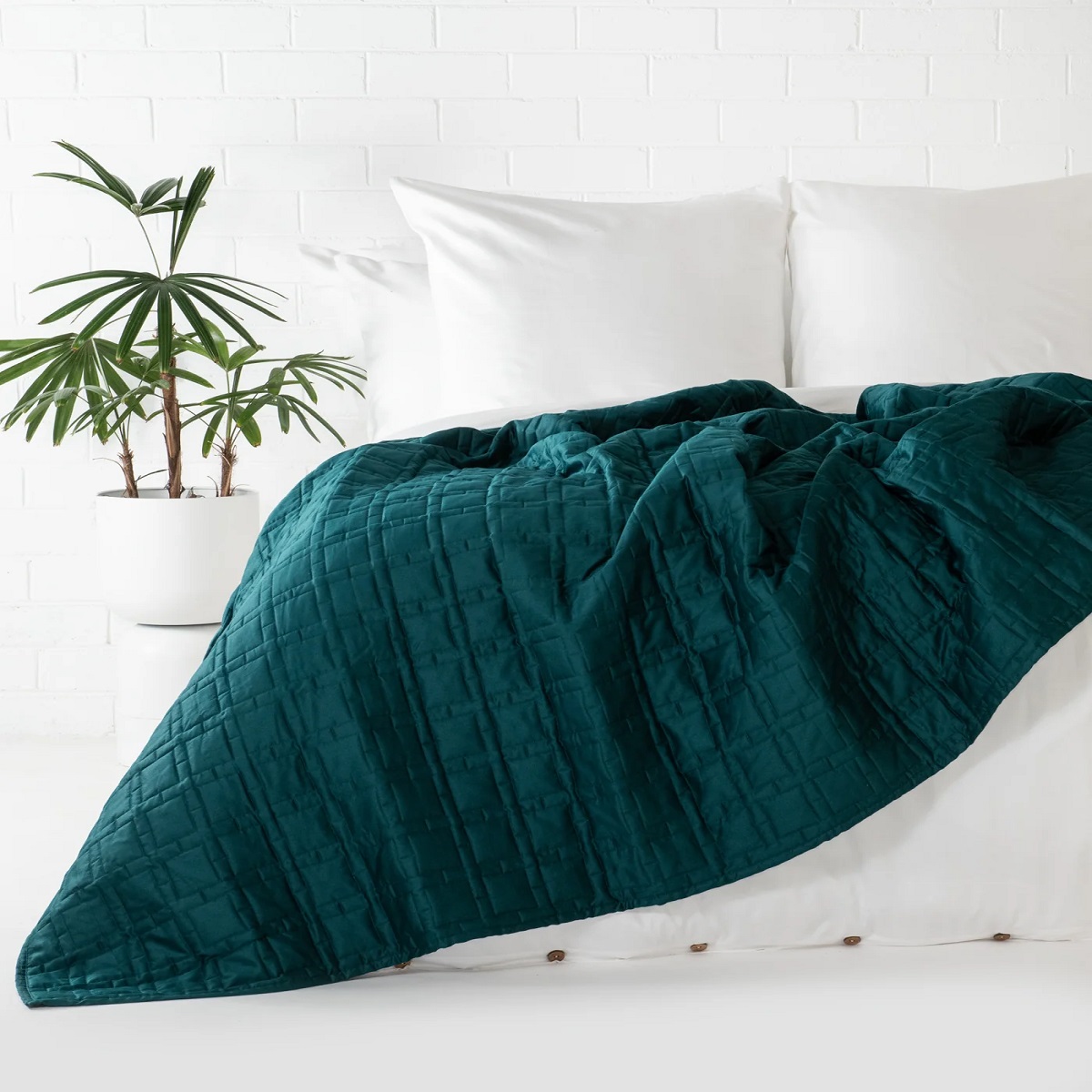






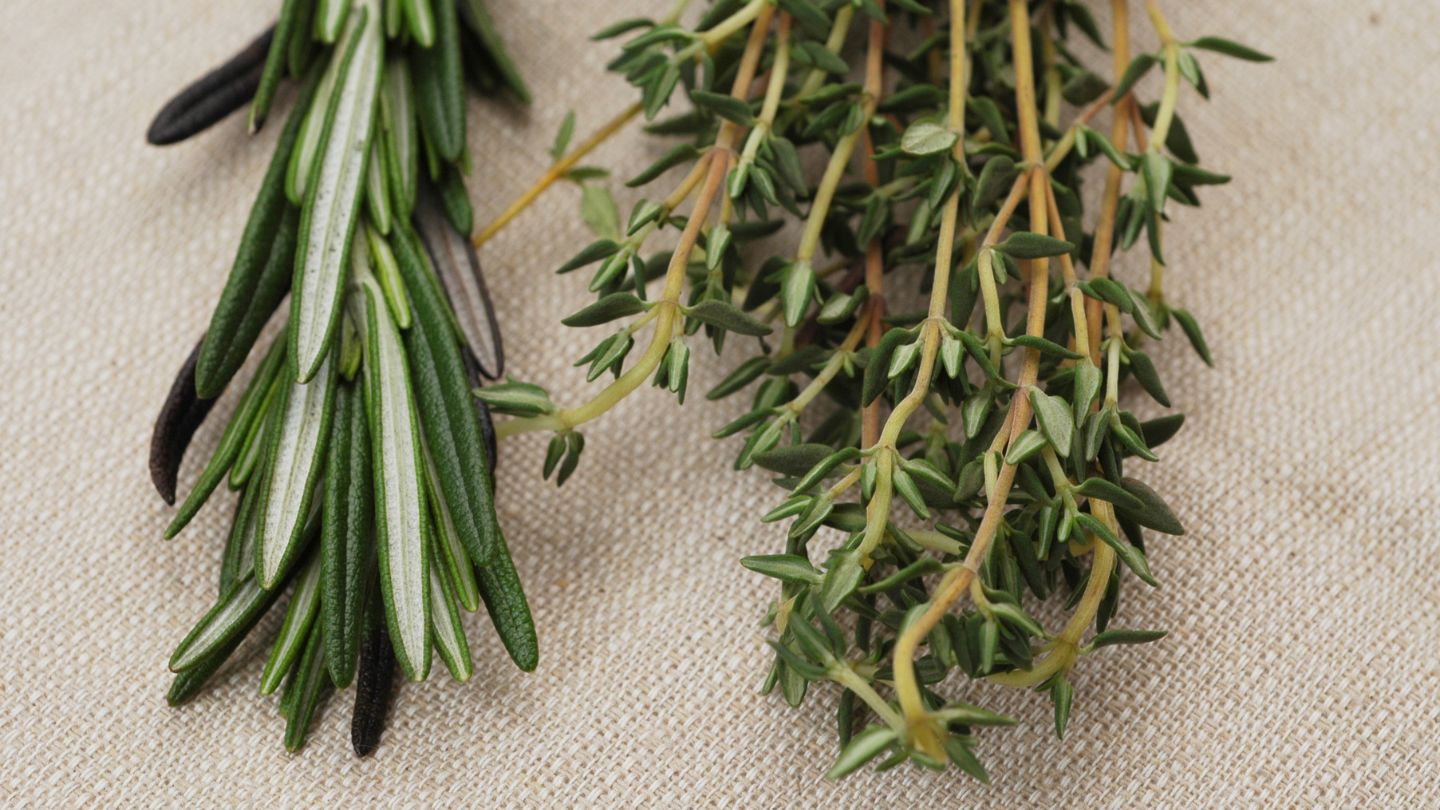

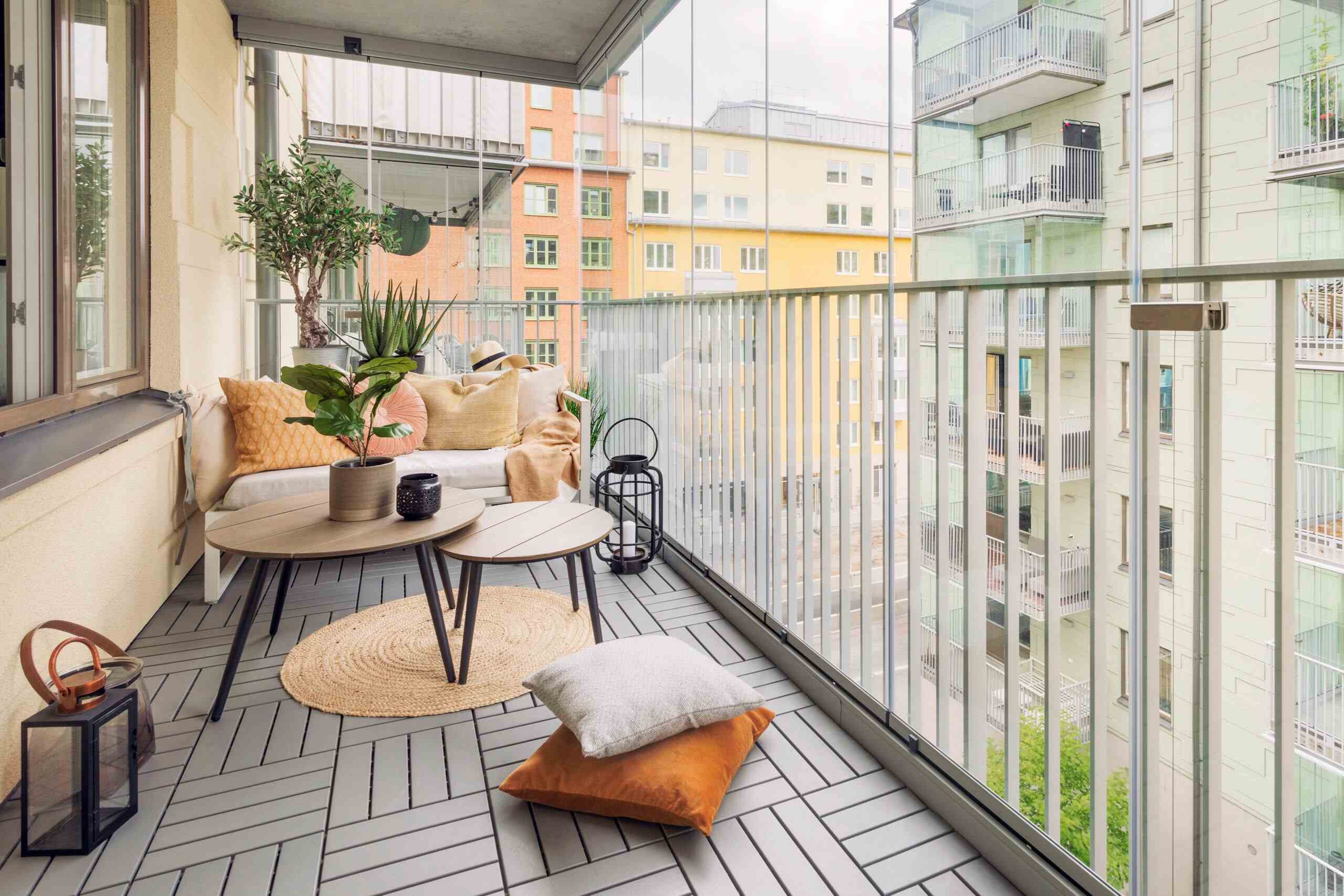

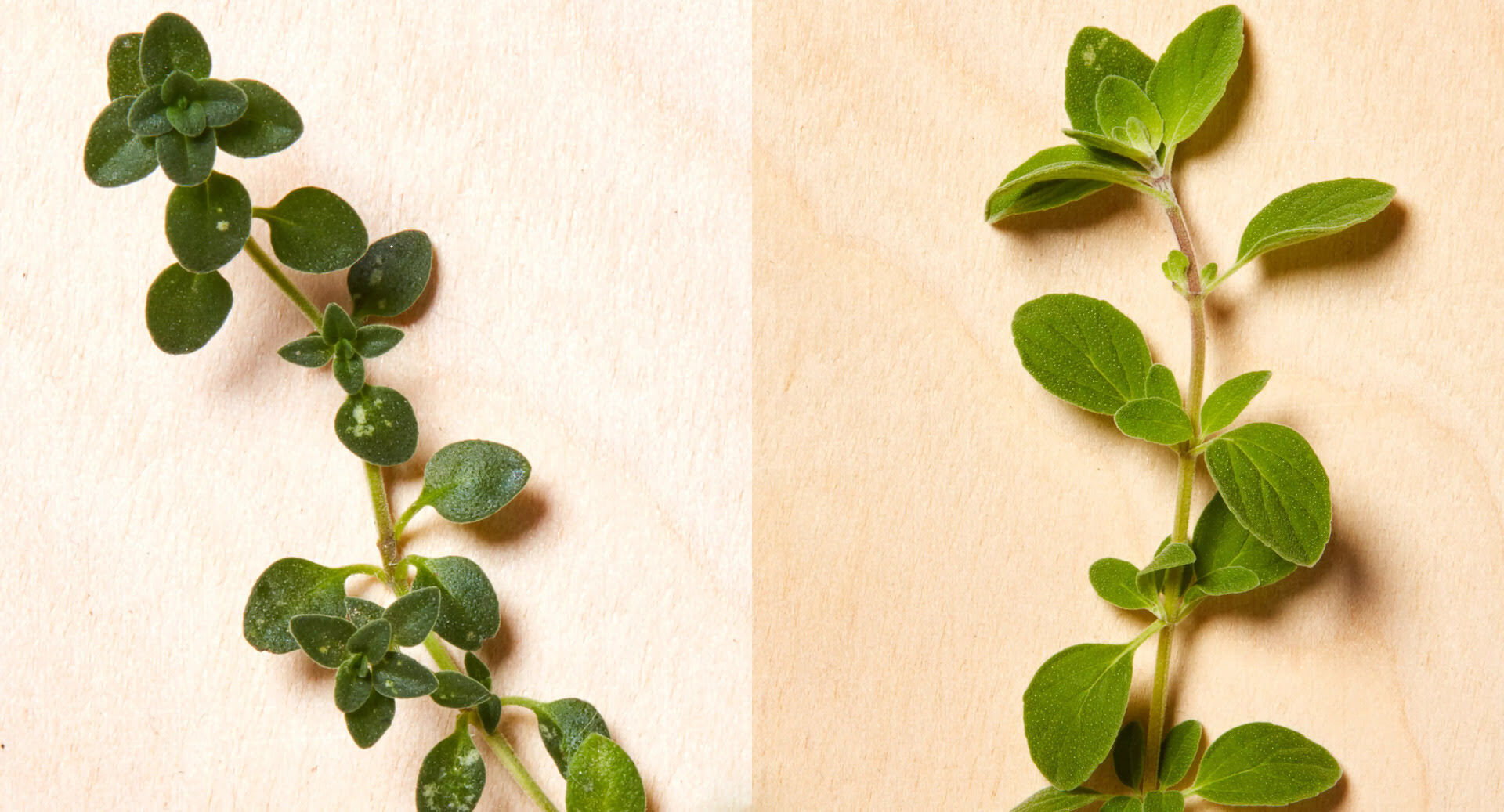
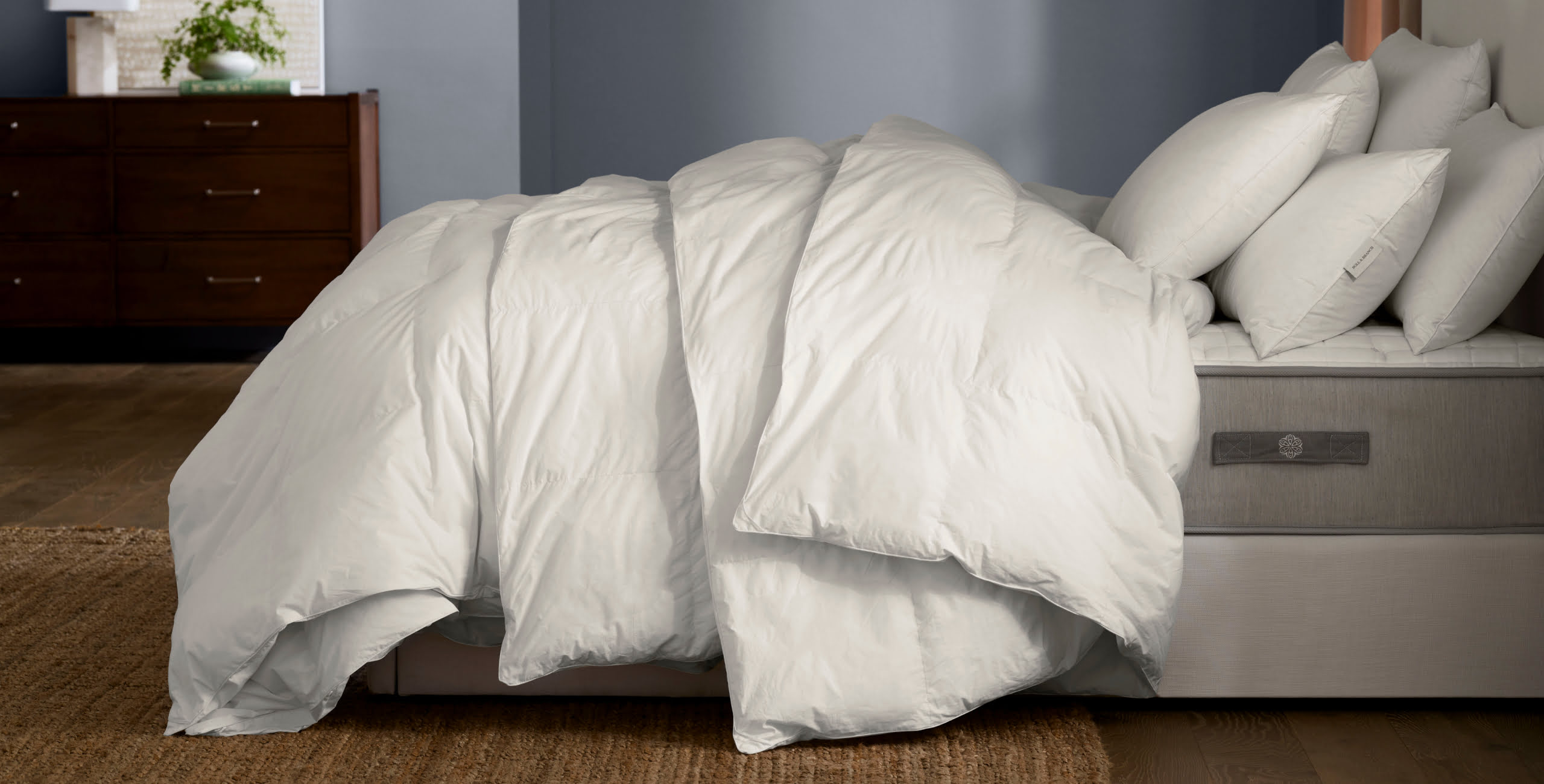

0 thoughts on “What Is The Difference Between A Coverlet And A Quilt?”